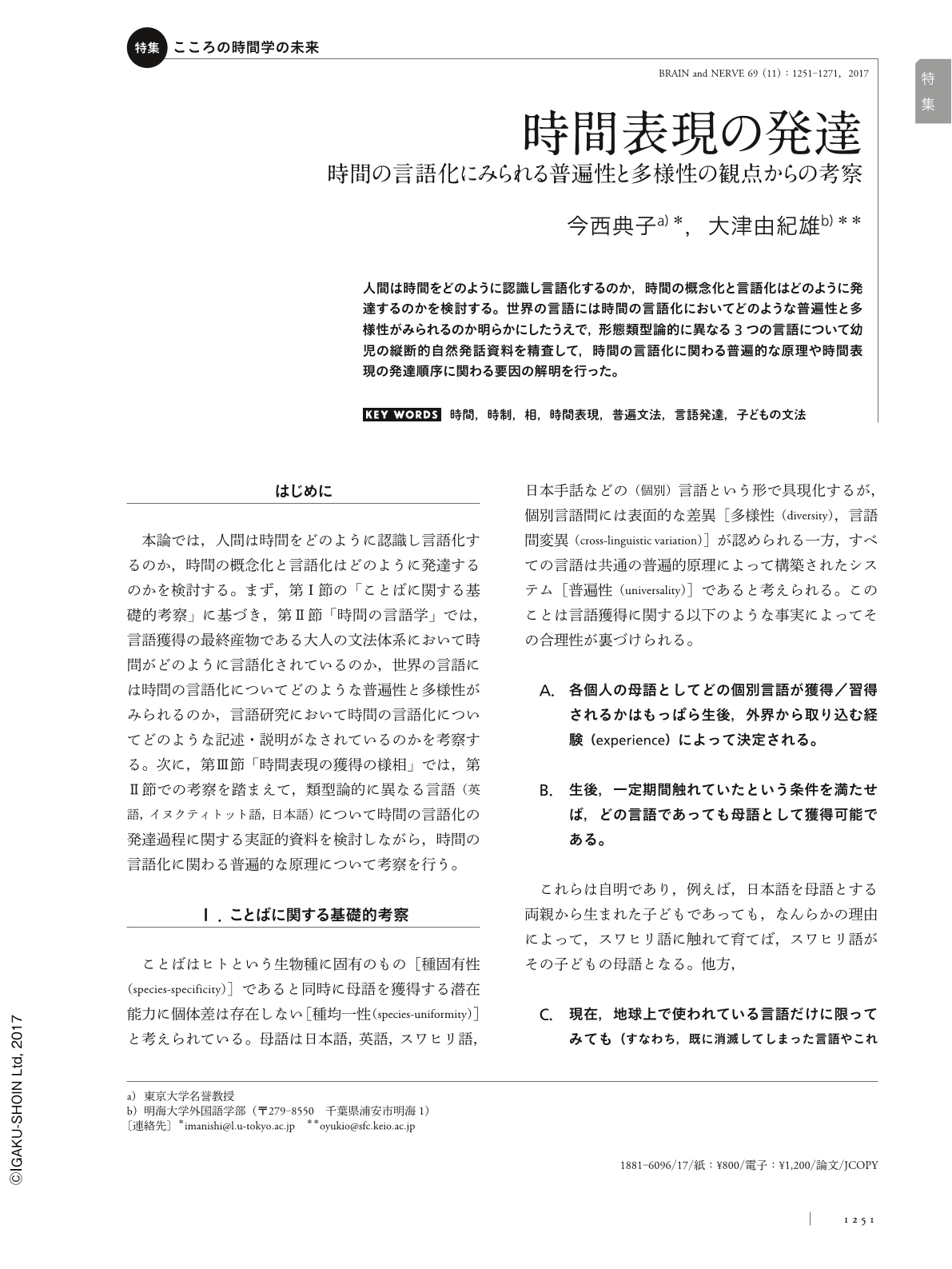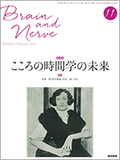Japanese
English
- 有料閲覧
- Abstract 文献概要
- 1ページ目 Look Inside
- 参考文献 Reference
人間は時間をどのように認識し言語化するのか,時間の概念化と言語化はどのように発達するのかを検討する。世界の言語には時間の言語化においてどのような普遍性と多様性がみられるのか明らかにしたうえで,形態類型論的に異なる3つの言語について幼児の縦断的自然発話資料を精査して,時間の言語化に関わる普遍的な原理や時間表現の発達順序に関わる要因の解明を行った。
Abstract
This study explores how time is conceptualized and linguistically encoded by human beings. In order to examine how the temporal systems develop in child language, we have conducted investigations on how their development relates to universal and idiosyncratic aspects of the temporal systems of the languages of the world. We have found that both the uniformity and the variation across languages in the development of tense-aspect marking in child language are attributable to the interaction of three aspects of the typological pattern of the target language: morphology, the presence or absence of optionality of tense-aspect marking, and the inventory of tense-aspect markers.

Copyright © 2017, Igaku-Shoin Ltd. All rights reserved.


